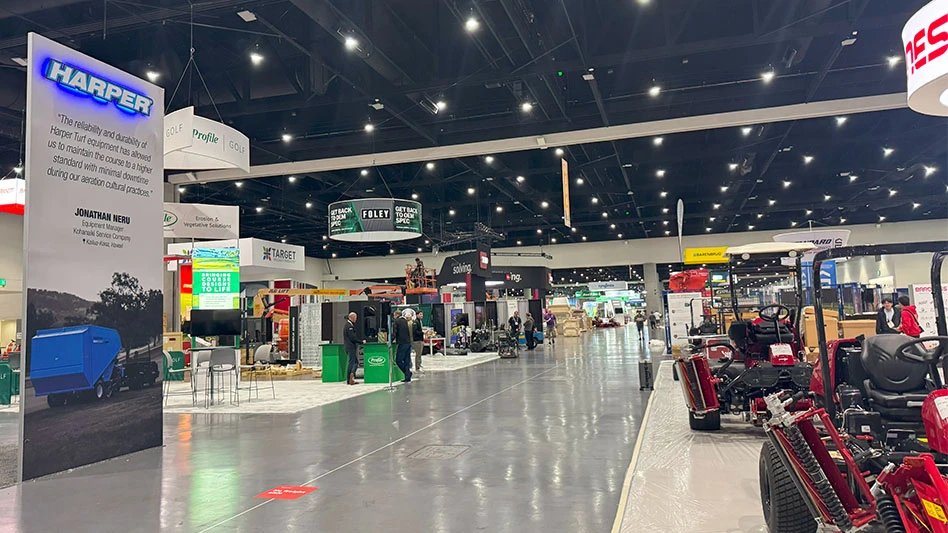
Use of controlled-release nutrients has increased significantly during the past decade. The desire for maximum control of nutrient release, reduced availability of labor, greater emphasis on environmental stewardship, and in some regions, increased regulatory restrictions on soluble nutrient inputs, has resulted in greater demand for controlled-release nutrients. Turf and landscape managers have also become very innovative in how this technology can be utilized by strategically applying the numerous controlled-release nutrient sources and longevities to maximize plant response and health throughout the growing season, in all types of climatic environments.
A formal introduction
Controlled-release fertilizers are the ultimate “Enhanced Efficiency Fertilizers.” Enhanced efficiency fertilizers (EEF) are defined as “Fertilizer products with characteristics that allow increased plant uptake and reduced nutrient losses to the environment, when compared to an appropriate reference product.” More specifically, a controlled-release fertilizer is “a slow-release fertilizer that is engineered to provide nutrients over time, at a predictable rate, under specified conditions.” The ability of controlled-release fertilizer to “provide nutrients over time, at a predictable rate, under specified conditions” is the true differentiator in comparison to other EEF’s such as sulfur-coated urea, reacted-urea and stabilized urea sources.
How do controlled-release technologies work? It’s actually very simple and free
Controlled-release fertilizers work by utilizing the processes of osmosis and diffusion available to all of us, at no charge! Once the minimum thresholds for moisture and temperature are met, plant nutrients begin the process of releasing as water is attracted to the high concentration of nutrients inside the fertilizer prill. That water moves through the semi-permeable coating (osmosis), then as the plant nutrient core solubilizes, that nutrient solution has the inherent desire to move from the area of high concentration inside the fertilizer prill to the lower concentration the soil solution (diffusion). This process can be described as “osmotic diffusion.” Do you make your own hot tea? If so, you have observed this naturally occurring process right before you very eyes! Next time you make a cup of tea in a clear glass, watch as the water moves inside the tea bag (area of higher concentration), then slowly reverses once the tea is solubilized, and seeps out of the bag and back into the water (area of lower concentration). Envision the color change was plant nutrients diffusing back into the soil solution ready and available for plant uptake.
Not sugar coating it
A major factor associated with the consistency, dependability and predictability of controlled-release nutrient sources is a highly durable protective coating. Without a durable protective coating, these plant nutrient sources become really expensive soluble nutrient sources. Vetting and selection of monomer sources by manufacturers is important in ensuring that a durable polymer coating is protecting the plant nutrient substrate. Ideally, the combination of monomers should react to create a homogenous, thin yet durable coating around the plant nutrient core. Finally, the manufacturing process should be optimized to produce consistency from batch to batch, thereby imparting maximum predictability of each controlled-release type.
So predictable
As previously noted, the predictable release rate of controlled-release fertilizers is a defining and differentiating feature relative to other plant nutrient sources. Harnessing the predictable power of controlled-release fertilizers is easily accomplished using nutrient release modeling software that predicts nutrient release rates based on; historical weather data of a specific geographic location, selected controlled-release source, application date and application rate. A highly predictable nutrient release rate can then be tailored to one's specific needs by modifying the controlled-release source variant, application date and application rate. Some nutrient modeling software versions can easily predict nutrient release from overlapping fertilizer applications by combining the respective release characteristics of each application, thereby, providing a complete, season-long prediction of plant nutrient release.
Keeping it clean
Controlled-release fertilizers have demonstrated exceptional environmental performance. Evaluation under both laboratory and field settings have concluded that controlled-release fertilizers can greatly reduce the loss of plant nutrients in the environment by minimizing nitrogen leaching, volatilization and N2O emissions relative to soluble nitrogen sources. It therefore is not surprising that controlled-released fertilizers are at times recommended by local municipalities in efforts to preserve local ecosystems when they are deemed vulnerable to non-point nutrient exposure.

Get curated news on YOUR industry.
Enter your email to receive our newsletters.
Explore the December 2021 Issue
Check out more from this issue and find your next story to read.
Latest from Golf Course Industry
- GCSAA foundation adds two to board of trustees
- Reel Turf Techs: Anthony D'Onofrio
- Foley Company promotes Tyler Barrett
- Beyond the Page 64: To infinity and beyond
- Plant Fitness expands into Asia Pacific markets
- Ace of a decision
- Idaho course joins Concert Golf portfolio
- Central Turf & Irrigation Supply celebrates 35 years in the industry





